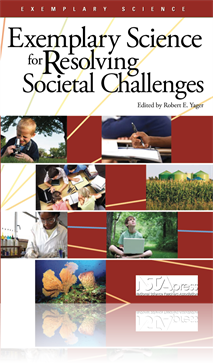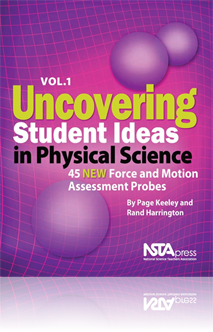All Book Chapters
Book Chapter
Engaging Students in Content Learning and Scientific Critique Through a Nanoscience Context
Nanoscience is increasingly visible in scientific endeavors, new technologies, and engineered products. Citizens and students must develop a sense of what constitutes scientific evidence of the positive and negative effects as well as side effects o...
Book Chapter
As in many other education jurisdictions, environmental education in Ontario is infused throughout the science curriculum. This infusion requires students to not only understand the science behind environmental issues, but also be provided with “me...
Book Chapter
An “HOLA” Approach to Learning Science
Implementing classroom instructional strategies that lend themselves to both unidimensional assessments and alternative assessments provide evidence of proficiency that can satisfy both school and student learning evaluations. Barnard Environmental M...
Book Chapter
Project-Based After-School Science in New York City
In this chapter, the authors report on how inner city high school students learn science through participation in an after-school science program called Explore! Project-based science instruction (PBSI) was used as the main method of instruction in w...
Book Chapter
Students as Scientists: Guidelines for Teaching Science Through Disciplinary Inquiry
Teaching Science as Inquiry (TSI) provides a foundation for engaging both teachers and students in disciplinary inquiry. This chapter describes a framework of teaching and learning developed to help overcome the difficulty in teaching the disciplinar...
Book Chapter
“Who Ate Our Corn?” We Want to Know and So Should You!
“Who ate our corn?” sounds like a simple enough question but is designed to intrigue students and launch them on a quest to find answers and to ask more questions. That is the goal of the Future Scientists Program featured in this chapter. The Fu...
Book Chapter
Applications of Biology as Part of a Preservice Program for Science Teachers
The Applications of Biology course provides students with the opportunity to apply scientific information in making decisions about real-world issues. Within the context of the course, students are introduced to an applications approach, with as many...
Book Chapter
Goal 3 of the National Science Education Standards (NSES) calls for students to “engage intelligently in public discourse and debate about matters of scientific and technological concern” (NRC 1996, p. 13). The unit described in this chapter, “...
Book Chapter
Tahoma Outdoor Academy: Learning About Science and the Environment Inside and Outside the Classroom
Taking students outside of the classroom is recognized as a valid and important pedagogical practice; however, teachers at all levels feel challenged when faced with integrating informal, outdoor, and community settings with subject-specific curricul...
Book Chapter
Developing Students’ Sense of Purpose With a Driving Question Board
The Driving Question Board (DQB) is an organizing tool used in the project-based curriculum described in this study, which serves as a visual organizer for all the curriculum’s contextualizing features. In this chapter, the authors report on the pi...
Book Chapter
Communic–Able: Writing to Learn About Emerging Diseases
High school students in a seven-week writing-intensive project at the University of Wisconsin School of Medicine and Public Health serve as research apprentices. This project focuses on students in need of additional development in communication, com...
Book Chapter
Earth Hounds: Dr. Xargle's Book of Earth Hounds and Seven Blind Mice
Learners develop understandings of the differences between observations and inferences by analyzing Dr. Xargle's comical, yet misguided, attempts to teach his students about human babies. Learners then make observations and inferences of "mystery sam...
Book Chapter
The purpose of this assessment probe is to comprehensively elicit students' ideas about the relationship between force and motion. The list of possible answers includes several distracters that are based on learning research; thus the probe will tell...
Book Chapter
The purpose of this assessment probe is to elicit students' description of the motion of an object. The probe uses the context of rolling down and up a hill to determine if students recognize when an object speeds up or slows down or does neither—m...
Book Chapter
The purpose of this assessment probe is to determine what students mean when they use words to describe motion, such as speed, velocity, and acceleration. The probe is designed to reveal students' initial meaning of the word velocity before formally ...





